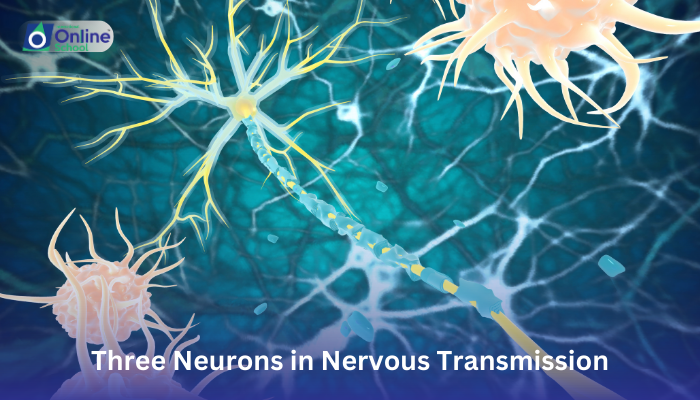
Learning Outcomes:
i. Identify and explain the roles of the three main neuron types involved in nervous transmission: sensory neurons, interneurons, and motor neurons.
ii. Trace the path of a sensory signal from a receptor to an effector through the three neuron types.
iii. Appreciate the coordinated teamwork of these neurons in generating responses to stimuli.
Introduction:
Imagine a bustling city, buzzing with information. Cars honk, sirens wail, and people chatter – a symphony of stimuli bombarding our senses. But how does this city respond? The answer lies in a remarkable trio of neurons, working together like a well-rehearsed dance team, to translate sensory information into action. In this lesson, we'll meet these three neuronal superstars and witness their coordinated performance in the grand play of nervous transmission.
i. The Sensory Pioneers: First on the Scene
Our journey begins with the sensory neurons, the perceptive scouts of the nervous system. These specialized cells have receptors at their tips, constantly listening and feeling the world around us. When a stimulus, like a hot pan touching your finger, activates a receptor, the sensory neuron springs into action. An electrical signal, like a spark, races down its length, carrying the message towards the central nervous system.
ii. The Interneuron Navigators: Orchestrating the Response
But the sensory neuron doesn't go it alone. Inside the spinal cord, it meets the interneurons, the local heroes of the nervous system. These versatile neurons analyze and refine the incoming signal, deciding its importance and where it needs to go. Think of them as the city's traffic controllers, directing the sensory information to the appropriate destination. For example, when you touch the hot pan, the interneurons send signals to your brain, triggering a pain response, and to your muscles, prompting you to pull your hand away.
iii. The Motor Maestros: Taking Action on Stage
Finally, the message reaches the motor neurons, the action heroes of the nervous system. These neurons reside in the spinal cord and brain, and they have a direct line to the muscles, the city's workhorses. When a motor neuron receives a signal, it sends a powerful electrical impulse down its axon, like a conductor's baton, activating the muscle fibers. In the case of the hot pan, the motor neurons in your arm muscles receive the signal from the interneurons and contract, pulling your hand away to safety.
iv. The Sensory-Motor Tango: A Collaborative Triumph
The transmission of a sensory signal is not just a relay race; it's a coordinated tango between these three neuron types. Each neuron plays a crucial role:
Sensory neurons: Capture the initial stimulus and translate it into an electrical signal.
Interneurons: Process and refine the signal, determining its direction and importance.
Motor neurons: Send the final command to the muscles, triggering the desired action.
The three-neuron dance in nervous transmission is a testament to the elegance and complexity of the nervous system. By understanding the roles of these neuronal stars, we gain a deeper appreciation for how our senses guide our actions, allowing us to navigate the world with agility and precision. So, the next time you blink your eye, take a step, or savor a delicious meal, remember the silent symphony of neurons working together behind the scenes, ensuring a seamless flow of information from sensation to action.